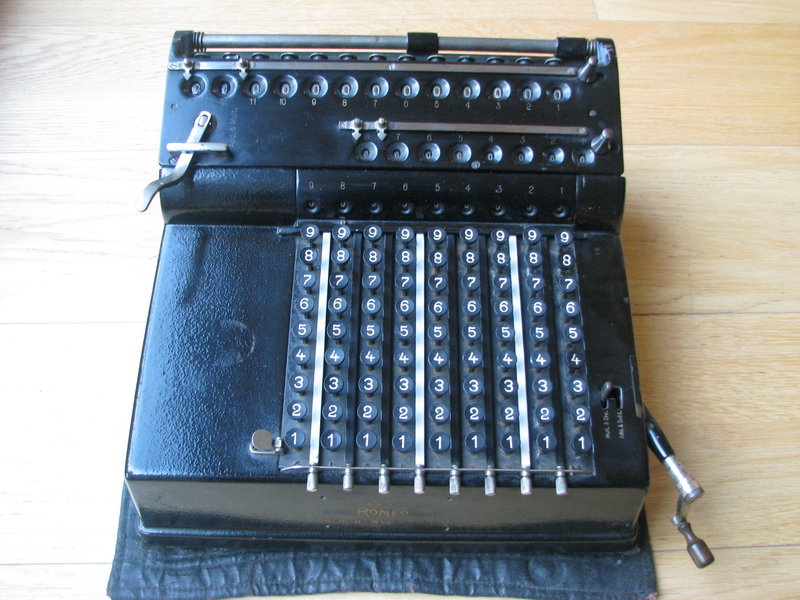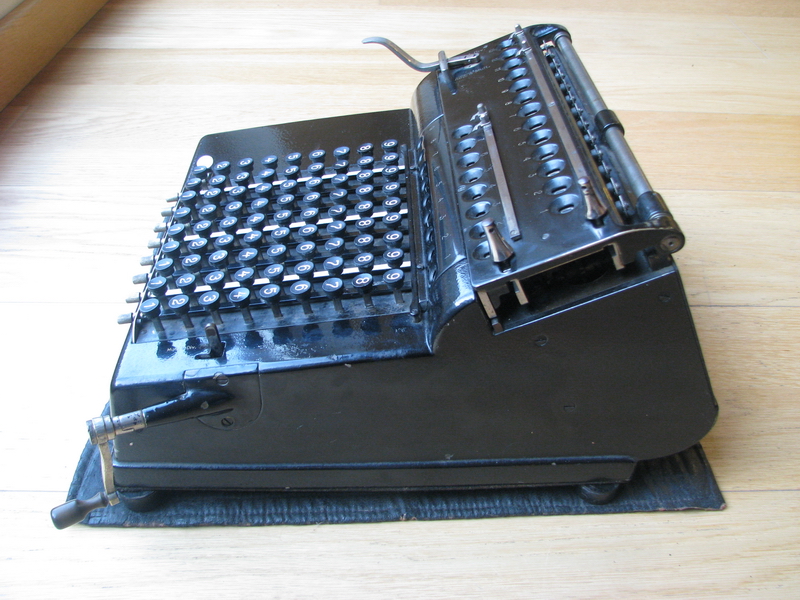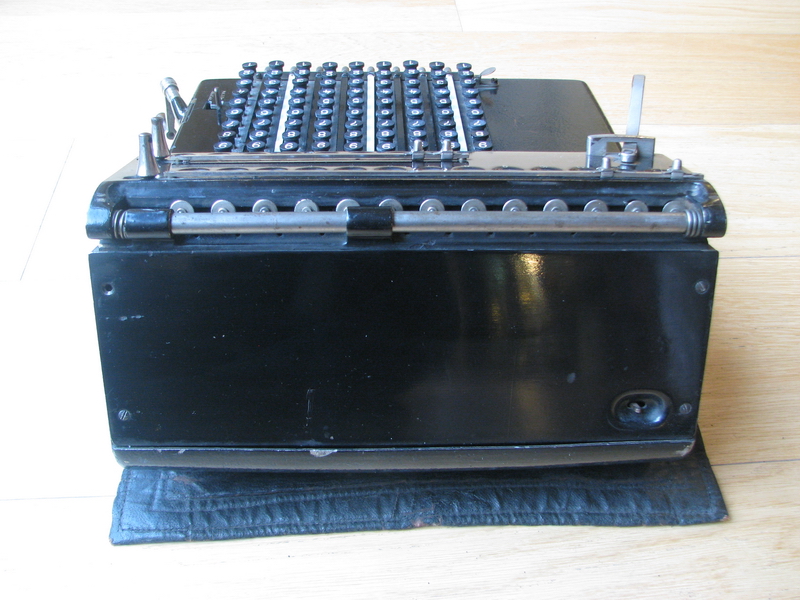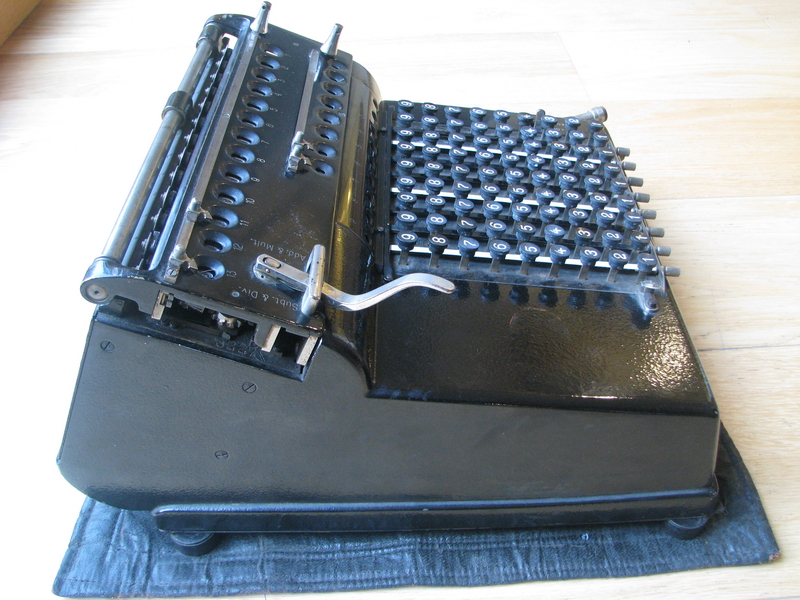Record
The Record is an interesting, and relatively early twist (literally) on the arithmometer, designed by Hugo Cordt in 1911 and going into production in 1913 as a keyboard alternative to the old slider arithmometers. Around the same time Egli tries this with the keyboard Millionnaire and Hamann with the Mercedes-Euklid IV and VI. The first keyboard Monroe in the US slightly predates the manufacture of the Record (1912), so clearly the time was ripe for this idea. Another number of innovative improvements have been made in the Record:Here are some pictures of the insides and underside,
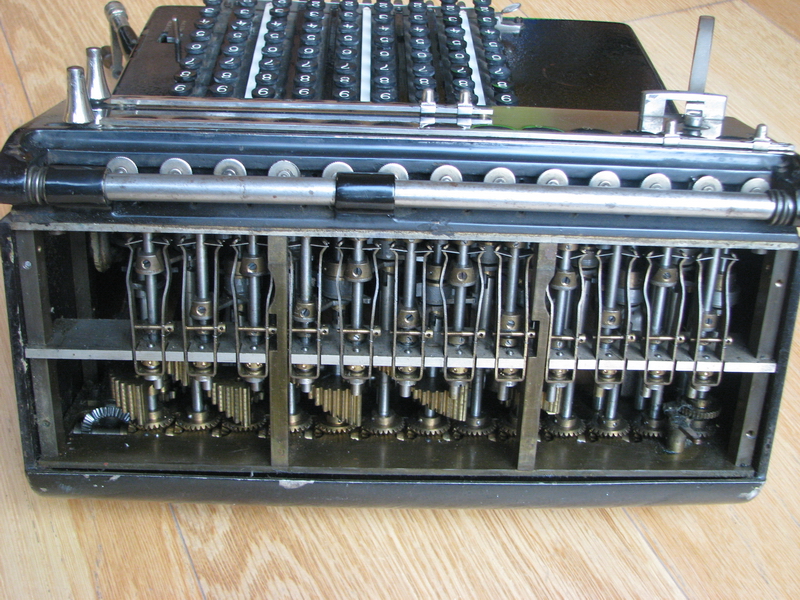
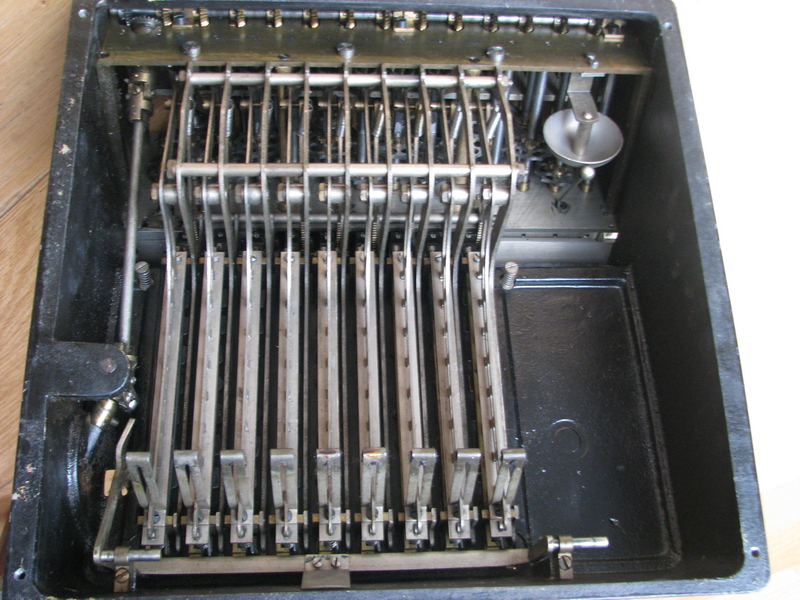
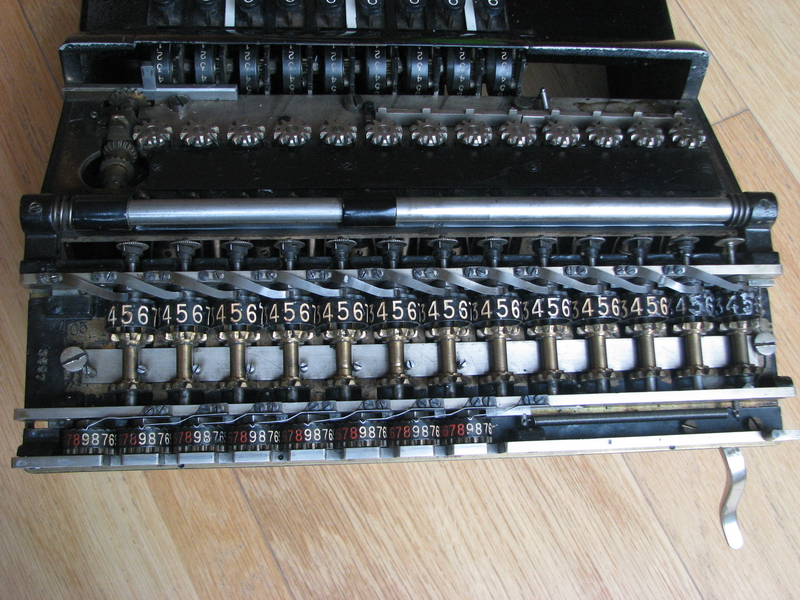
as well as a quite clear diagram from Lenz' Büromaschinen.
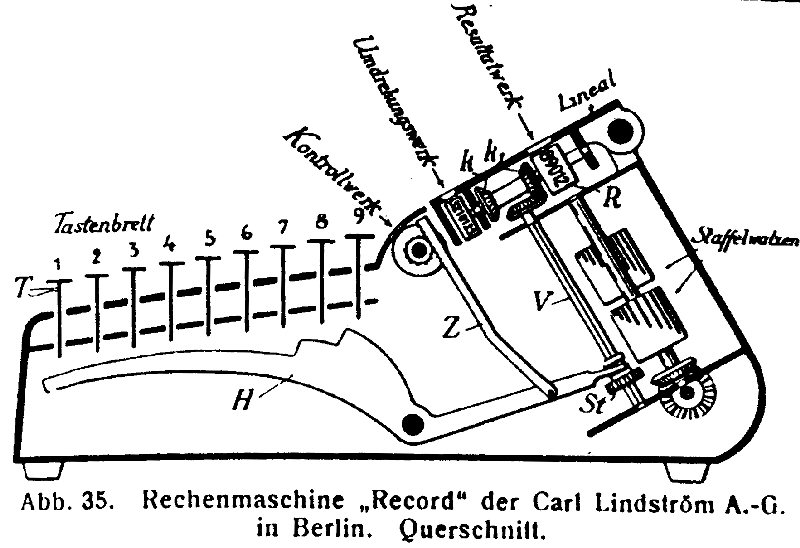
At first sight, the Record machine appears similar to the (later) Kuhrt, but the principle of operation of the machines is completely different. Interestingly, both designers (Cordt and Kuhrt) would later work together on a bookkeeping machine. For the entire story, see Martin Reese's article in Historische Bürowelt n°96 of 2014. Back issues are available in the member section of the Internationales Forum Historische Bürowelt, so do become a member!
The Record machine was first produced in small numbers by a small consortium in Nordenham in 1913, then in Oldenburg in 1914, and from 1915 on in Berlin, with Heinrich Oehlmann as an investor. The Great War meant that the undertaking was not met by immediate and large success, and few machines were built (approximately 700). In 1921, the Lindström record (as in, 78 rpm music and gramophones) concern was attracted as an investor, and he took over production and sales of the machine, which was renamed "Lindström Record", and sold through the "Deutsche Roneo Gesellschaft". (Incidentally, a record in German is "ein Schallplatte" - it is not certain that the Lindström people realised how funny a coincidence it is in English that a record company starts to produce a calculator with the name "Record") This met with more success, and an additional 6000 machines were built until 1929.
I have had one of these machines for a very long time - the only issue being that it is was more of a parts machine than something that could be restored to working order - it is very rusty, but the main issue is that half the keyboard is missing, and the rest is a mish-mash of keys from various sources. It would be a very big job to remake. I'd be willing to make a start on that if the rest of the machine would clean up properly, but I fear I would never get it right. Thus, this machine with serial nr. 2813, well into the Lindström era, has been standing around in a box, waiting for better times.
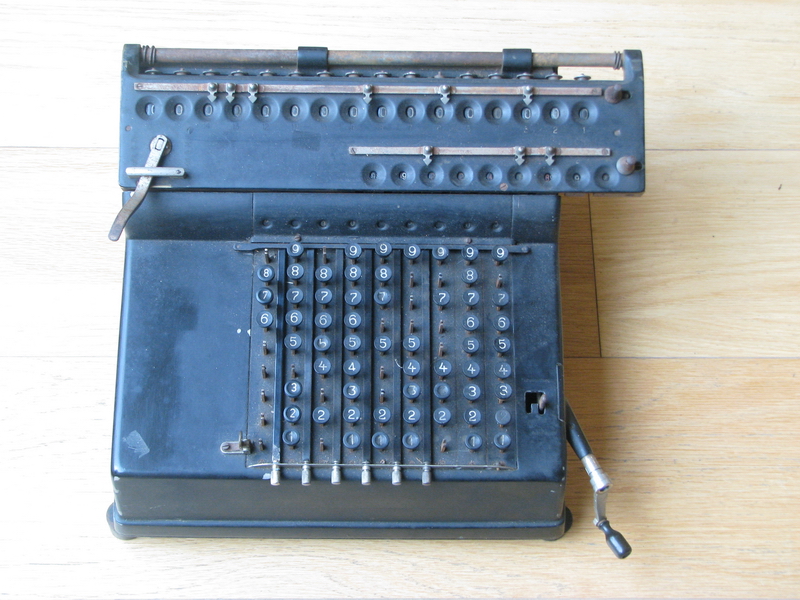
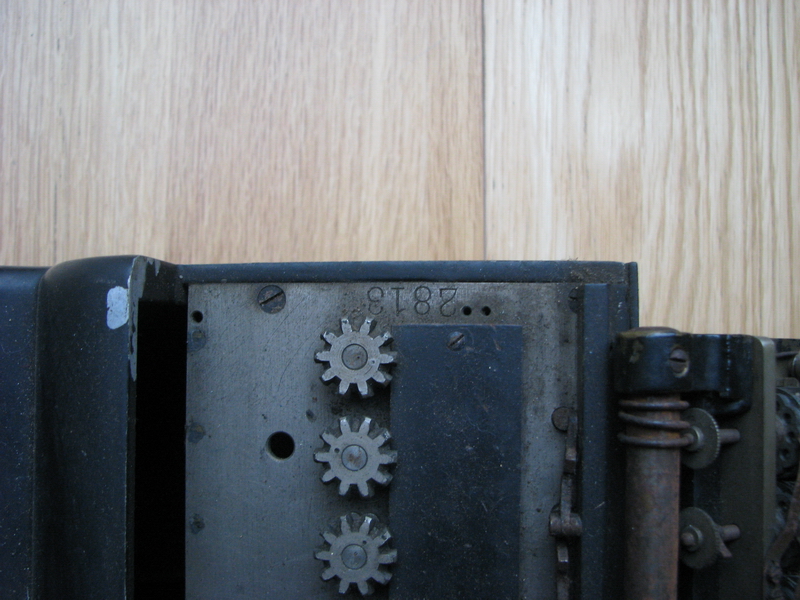
A few days ago, a Lindström Record appeared on a local second-hand site, and I went to pick it up. This machine, N° 3227, was still much shinier (although the top plate displays one of the worst examples of orange peel effect in the paint that I've ever seen) and was only missing a few keys, which could easily be replaced with the ones that I could now see were original on the other machine. It was urchased in the 20s by a textile merchant in Rotterdam, and has the gold "Deutsche RONEO Ges.m.b.H." name and address in the Kochstrasse 32 at the front.
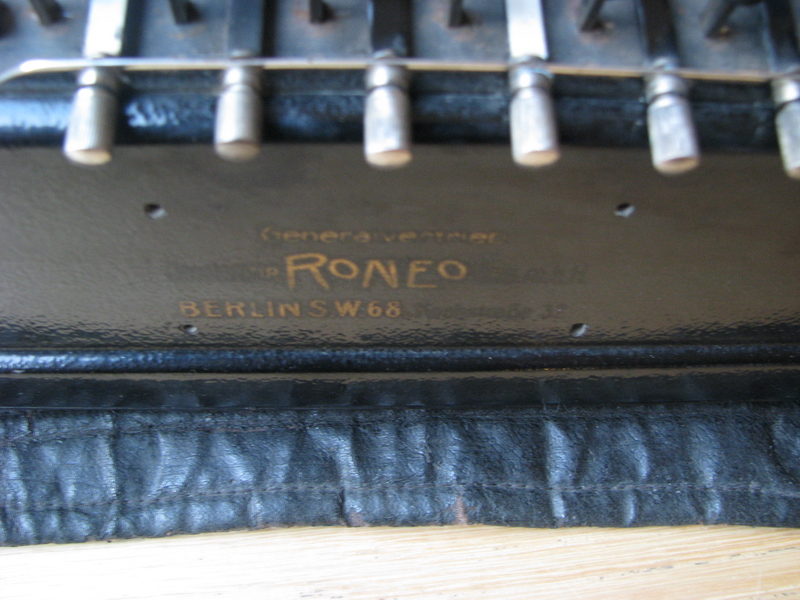
The top plate had a logo (of the local reseller ?) placed on it, but unfortunately the decal has worn away, so that is impossible to trace - all that's left is a vague outline and a suggestion of red and gold.
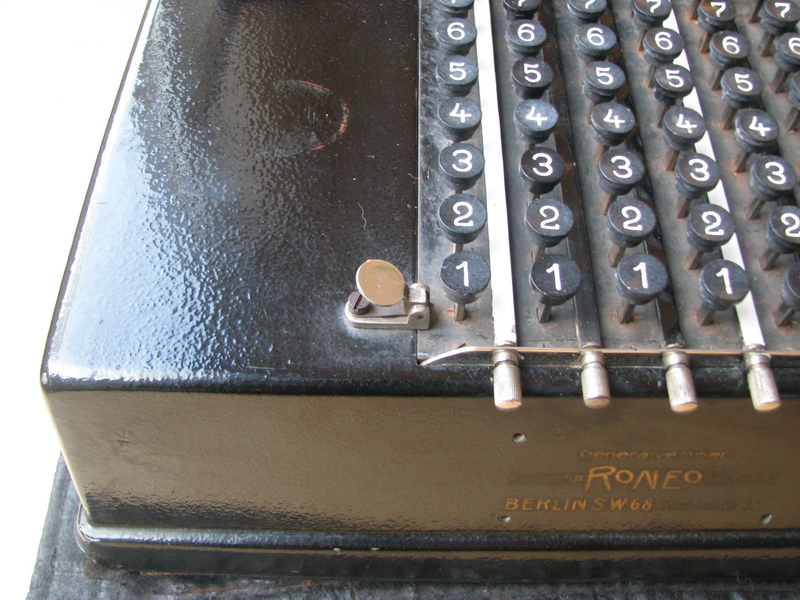
What is very cool is that it also came with a faux-leather pad to put under the machine to prevent it damaging the table, as well as the tattered remains of the top cover.
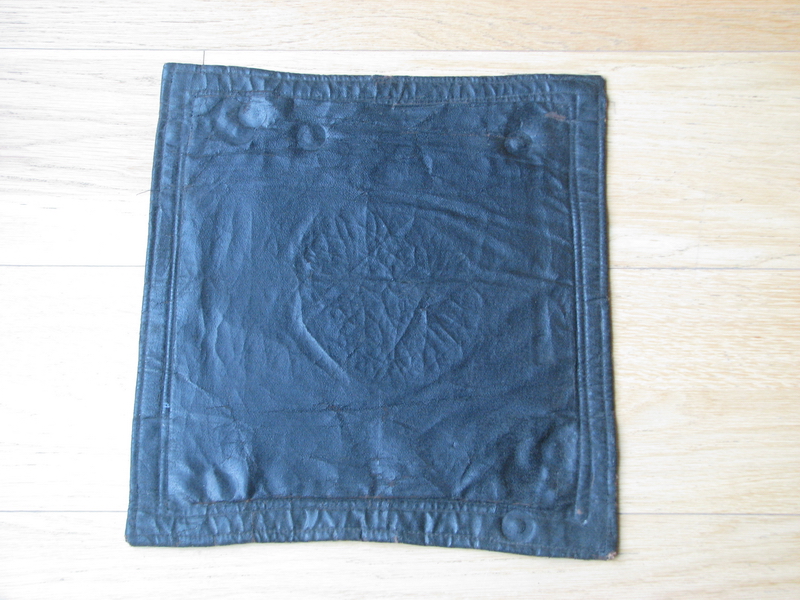
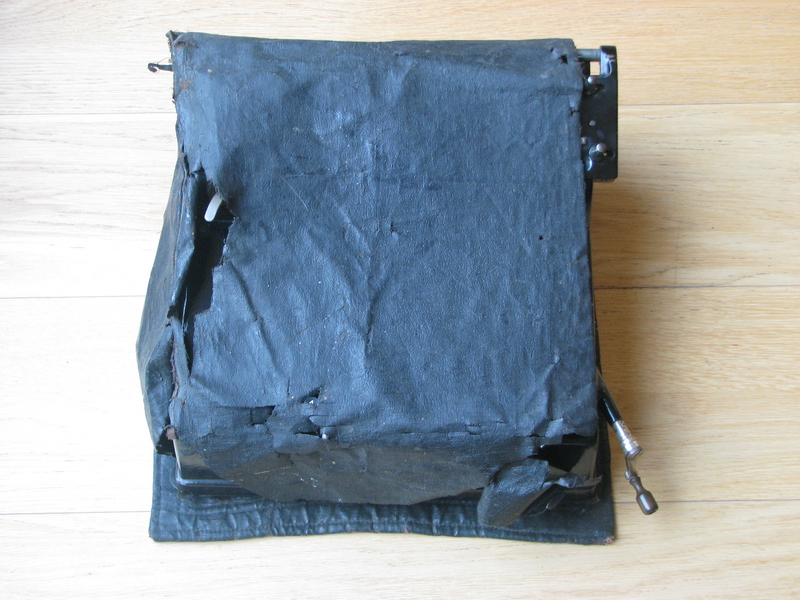
When restoring the machine, the biggest challenge was to fix the freely rotating numeral roll at the left end of the carriage. The two last rolls had been painted black, so the numbers could no longer be read. I remember thinking "that's odd, that can't be hard to fix".
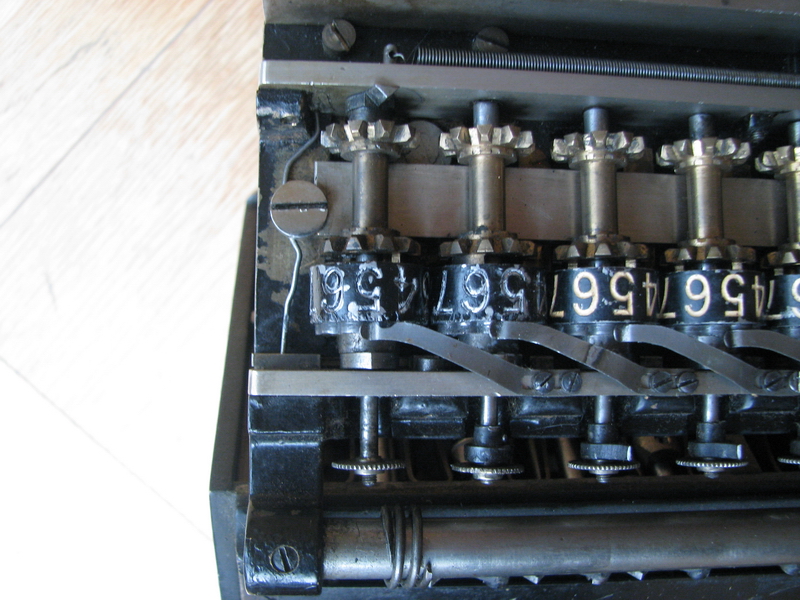
Was I ever mistaken ... the way the carriage is constructed entails three strong nickel plated rails, that are screwed to the carriage top, with holes to contain the axles for the numeral rolls. The tens carry tooth is at the back, right next to the thumbwheel for manual setting. The issue is that everything on the axles is cross-drilled and pinned in place with very fine steel pins. In addition, the zeroing eccentric, numeral wheel, and catch of the bevel drive of the numeral rolls are pinned to each other too. The order of assembly is quite clear - the rails are screwed to the carriage top, the eccentric, numeral roll and bevel drive catch are pinned together, the axle is assembled through them and through the rails, then the assembly is pinned to the axle, and at the other side of the rail the ten's carry tooth is pinned to the axle, in this way making the rail captive. At this point, it becomes almost impossible to reach the screws that hold down the rails, and if the pins cannot be undone without bending the axles ... well, you get the idea, it is a chinese puzzle, but a rather impossible one, especially if it is the pin holding the three items on the axle together that snapped. Even if I would have been able to get it out and on a drill press, trying to drill a broken 1mm steel pin out of a brass part takes more talent as a machinist than I currently possess. Luckily, after much use of colourful language on the address of Hugo Cordt, there is a 21st century solution to this problem - cyanoacrylate glue. Sheesh.
So finally, a bit of a description of the operation of the machine, and some pictures. The machine has a keyboard with a lever on the left side. The lever has two positions, to the left is "addition/subtraction", and to the right is "multiplication/division". It is simply for automatically clearing the keyboard, and that is also what the engraving on the slightly earlier machine says - there you have a choice between "manual" and "automatic".

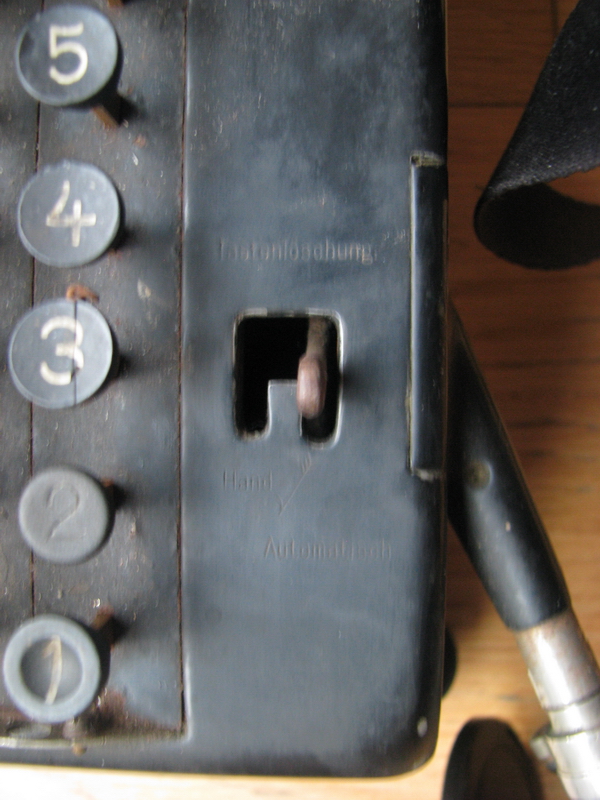
The keyboard operates as expected, and shows the number entered not only through a depressed key, but also through a check register at the top of the keyboard. The handle, as on all stepped drum machines, rotates only in one direction, clockwise. The choice between positive and negative is made though a large nickeled lever on the left side of the carriage, which can be pushed down and shifted from left to right. It also doubles as a lifting handle for shifting the carriage.
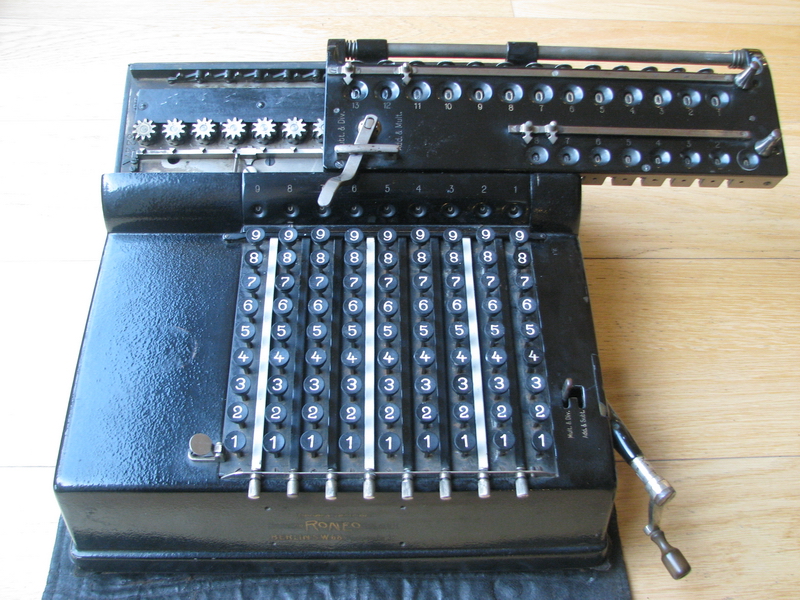
Using it for lifting excludes pushing it down, so mistakes where you change the direction of the machine when shifting the carriage are pretty much impossible. Should the machine block for some reason or other, the is a button at the back of the calculator which can be used to uncouple the ratchet device on the main axle and rotate the crank counterclockwise to its resting position. The final item on the top plate of the machine is a spring loaded catch for the 1-button in the extreme lefthand column of the keyboard, that allows it to remain depressed even when the keyboard is set to "automatic" and zeroes after every turn of the crank. This allows to use the left part of the result register as an item counten in making long sums.

Now, for the official portrait:
